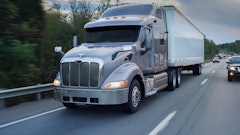Buffalo, NY: With escalating gas prices, stricter government highway safety regulations and increased demands to protect the environment, manufacturers are aggressively seeking the most efficient means for transporting products to market.
Intermodal freight transportation is becoming pivotal to the transportation industry as it offers streamlined costs and important efficiencies to benefit businesses and the general public.
Intermodal transportation is the process of integrating rail and truck services to move product to market efficiently. Intermodal transportation utilizes the nations' rail network to transport cargo that would have otherwise moved via tractor trailer.
"We capitalize on the fact that one train pulled by two locomotives can haul the same amount of freight as 300 tractor-trailers of products hauled by 300 drivers," says Robert Rich, president of ROAR Logistics, a Buffalo-based intermodal marketing company, third party logistics provider, and subsidiary of Rich Products Corp.
"The door-to-door transit time may be extended by 2-3 extra days, but the cost savings can be substantial over traditional truckload shipping. When these savings are coupled with the environmental and highway safety benefits, intermodal transportation is gaining significant momentum and is clearly a mode of transportation that manufacturers should be looking at very closely."
"By integrating truck and train, intermodal allows our customers to capitalize upon the transit efficiencies of trucks and the cost efficiencies of rail. When managed effectively, we can typically save our customers 15-20 percent over highway transportation on a coast-to-coast shipment," says Rich. "Given the escalating conflicts in the Middle East, the price of oil could remain high for quite some time. This makes it imperative for our customers to look at all transportation modes for cost savings. Last year, ROAR saved our clients significant transportation expense, while at the same time growing our business by over 30 percent through our intermodal product offering."
Environmental Impact, Highway Safety
Another reason intermodal freight transportation is becoming increasingly popular is the reduced impact it has on the environment. Trains emit only about 5.4 pounds of carbon dioxide per 100 ton-miles, compared with approximately 19.8 pounds for trucks. Companies that integrate the two modes of transportation—for instance, by going from truck to train to truck—leave a much smaller carbon footprint on the environment.
"That's important for businesses in this era when everyone is thinking green," says Rich.
According to Rich, another advantage of rail transportation is reliability, capacity, and safety. Trains run on predetermined schedules. In contrast, the availability of trucks can vary considerably at different times of the year and in various parts of the country due to freight availability and regional fuel price volatility.
In addition, the Federal Motor Carrier Safety Administration's new Compliance, Safety, Accountability (CSA2010) regulations, issued in December 2010, will further accelerate the trend toward rail and intermodal freight. Designed to enhance highway safety, CSA is an initiative to improve large truck and bus safety, and ultimately reduce crashes, injuries and fatalities that are related to commercial motor vehicles.
The new regulations stand to increase the operating costs of truck carriers by enforcing stricter safety ratings as well as stringent restrictions on driver hours. These additional costs are ultimately passed on to consumers, and as a result, making intermodal an even more attractive alternative to traditional highway transportation.
"We believe that intermodal freight will continue to grow into the foreseeable future because of its inherent advantages over the highway-only movement of freight, and the increasing costs associated with pure over-the-road trucking," says Mike McClellan, vice president, intermodal and automotive marketing, Norfolk Southern.
According to Rich, "Rail is becoming a 'new frontier' again. We serve our customers by staying ahead of the trend. Shipping is very complex with myriad alternatives. Choosing the right mode for the type of shipment is crucial."















